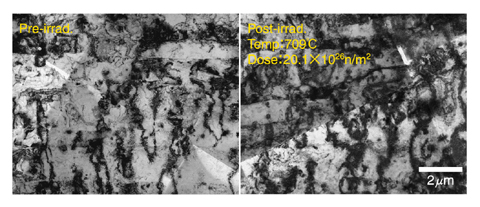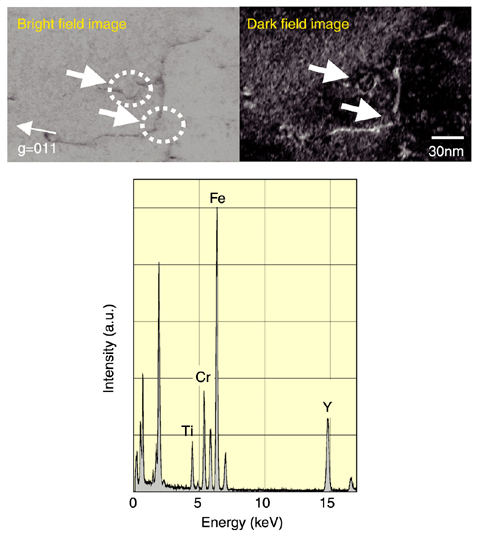
Fig.1-5 A comparison of microstructure between pre- and post-irradiated ODS steels

Fig.1-6 Bright and dark field images of oxide pinning dislocation and EDS from the oxide
Oxide Dispersion Strengthened (ODS) steel is one of most promising nuclear reactor materials because of its superior swelling resistance and excellent high temperature strength. We are developing a cladding tube of ODS steel for a Fast Breeder Reactor (FBR) to achieve higher thermal efficiency in the FBR system.
Important issues in the development of ODS steel are as the following; (1) To establish the cladding tube fabrication technology for ODS steel on a commercial scale, and (2) to inspect and demonstrate successive property changes of the irradiated ODS steel up to the target total dose in the FBR (5.0×1027n/m2:E>0.1MeV).
For solving the problems involved in irradiation testing and study, we are acquiring irradiation data by the following two steps. (i) The performance limit of this kind of alloy is being estimated prior actual testing of our originally-developed ODS steels by testing the commercially fabricated ODS steel MA957. Subsequently, (ii) we are planning to demonstrate irradiation tolerance of our ODS steel as the cladding tubes by exposing it to the target doses.
Information on heavy neutron-irradiation of ODS steel at elevated temperatures has been obtained for the first time in the world. Fig.1-5 is a comparison of the microstructure before and after irradiation, indicating that the microstructural stability of MA957 is maintained even under this severe environment. On the other hand, Fig.1-6 is a bright and dark pair of images showing oxide pinning dislocation and Energy Dispersive Spectrum (EDS) from the oxide. We found that the oxide particle, which is composed of yttrium (Y) and titanium (Ti), effectively pinned dislocation under irradiation at elevated temperature.
In near-future plans, post irradiation tests of our originally-developed cladding tube made of ODS steels are scheduled, and we hope to confirm and demonstrate the irradiation tolerance of these materials.